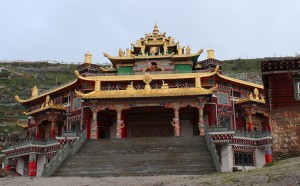
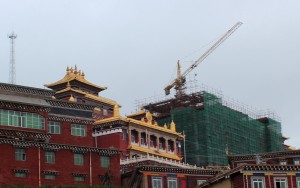
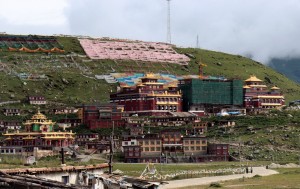
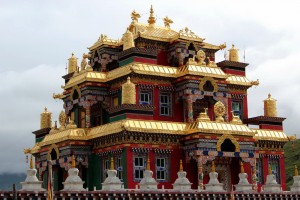
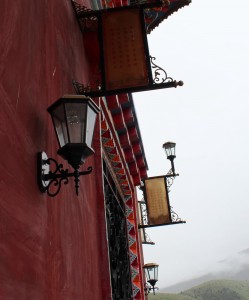
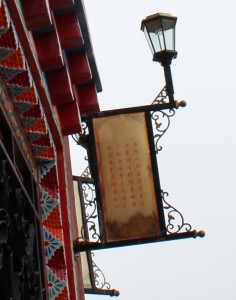

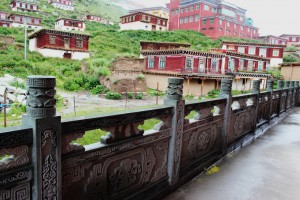
High Peaks Pure Earth has translated a blogpost by Woeser written on September 4, 2011 for the Tibetan service of Radio Free Asia and posted on her blog on September 11, 2011.
In a series of posts making up Woeser’s summer travels to Lhasa, through Amdo and Kham, the post below is the follow up to “Sersh�l Monastery In Recent Years”.�In this post, Woeser touches on environmental destruction in Kham as well as describing all the things that make the restored Dzogchen Monastery “magnificent”. The next post in this series will describe Woeser’s impressions on arriving in Lhasa.
The night before we went to Dzogchen Monastery, we camped out on the grasslands. The place we stayed at belongs to Derge County, which is also my late Father’s hometown, so I felt a sense of benignity mixed with some sadness. As someone who has travelled to many places in Tibet, when I sit on the grass, listening to the low murmuring of the river water flowing past, looking at the clouds reddening and darkening, I always think that Tibet is the most magnificent place; but the empty batches on the green mountains clearly serve as a testimony of the destruction of forest resources.
Ten years ago, on my way to Pelpung Monastery, I encountered migrant workers who were excessively cutting down trees. There were several hundreds of timber logs scattered across the hillside, piling up at the bottom of the ravine, the mountains and fields echoed the sounds of axes and hatchets cutting down trees, mixed with the roaring of the workers. I followed the noise up the hill and took some photos and was almost overwhelmed by a timber log that one of the tree fellers had deliberately pushed down. At the time, I also heard a reporter from Xinhua saying that since the trees in Drango County of Kardze Prefecture had already nearly been exhausted and the mountains were completely bare, the only option was to directly dissolve the local forest industry.
Camping in the Tibetan countryside is a very satisfying experience; even though half way through the night it started raining very heavily and we all had to squeeze inside our car to sleep, as soon as the sun rose, the clear and pleasant scenery, the special characteristics of the Qinghai-Tibetan Plateau made the air feel fresh and clean, containing the scent of incense and tsampa; one couldn’t help but feel happy and relaxed. Then we set out to drive towards the renowned great Nyingma Monastery – Dzogchen Monastery.
There is no need to, like a tourist, talk about the experiences of visiting Dzogchen Monastery several times, but what I do need to say is that my first visit was most beautiful one. When I saw the student monks embracing the sutra scriptures, when I stepped into the Buddhist hall that had been rebuilt after the calamities of the Cultural Revolution, I felt as if I was watching the scene described by Sogyal Rinpoche in “The Tibetan Book of Living and Dying”: The successful Patrul Rinpoche is lying on the hilltop behind Dzogchen Monastery, pointing at the stars flickering and twinkling in the whole sky and asking his student monk whether he had seen them; the student monk was at once enlightened.
Over the past ten years, Dzogchen Monastery has clearly become more and more magnificent. When I saw it once more with my own eyes, the Great Scripture Hall and other Buddhist halls had been excessively decorated and the building materials used for this were totally different from traditional temple materials. For example, they used ceramics for the flooring and aluminium-alloyed windows, western-style wall lamps, Chinese-style door locks, marble-sculptured railings, and the vertical banners hanging from the walls resembled Chinese-style rhyming couplets; on both sides were written Buddhist words in Chinese and Tibetan writing. As for the multi-layered golden summit and each of its golden banners and dragon-headed upturned eaves, no matter whether they were made from gold or copper, one could see from far away that they had been luxuriously polished.
An outstanding Tibetan Rinpoche said to me that today, in the same way as people like to use popular building materials to decorate their houses, temples, scripture and Buddhist halls are also being refurbished with reinforced concrete, ceramics, aluminium etc. giving up the traditional building techniques and styles; he always thought it was a kind of integration with modern society but the result was that, as we could see during the Yushu earthquake last year, the buildings that collapsed and fell apart were those new ones; the temples and Buddhist halls that had been rebuilt in the 1980s using traditional materials, on the other hand, remained sturdy.
I still remember the summer of 2004 when a Han Chinese friend of mine, a lay Buddhist, followed an influential Han Chinese Buddhist lama to Dzogchen Monastery to join the great opening ceremony of the Scripture Hall but my friend was rather disappointed. It is said that the ceremony resembled that of a government held event, including the cutting of a ribbon and the burning of fireworks and the Rinpoches, in the same way as big leaders, took turns to go on stage and deliver speeches; it seemed that the workings of officialdom had infected them too. The two Han Chinese Buddhists left hurriedly and only after visiting the Serthar Larung Gar Buddhist Institute they thought their trip had actually been worthwhile.
In the past, in Lhasa, a wandering lama read out a poem to me that he had written himself: “The exteriors of buildings have been beautifully moulded with treasured objects, the interiors of buildings are missing the divine treasure vase, these kinds of buildings I do not like; the exteriors of temples have been beautifully moulded with gold and silver, the interior of temples are missing the sweet dew of Dharma, these kinds of temples I do not like…”
Lhasa, September 4, 2011

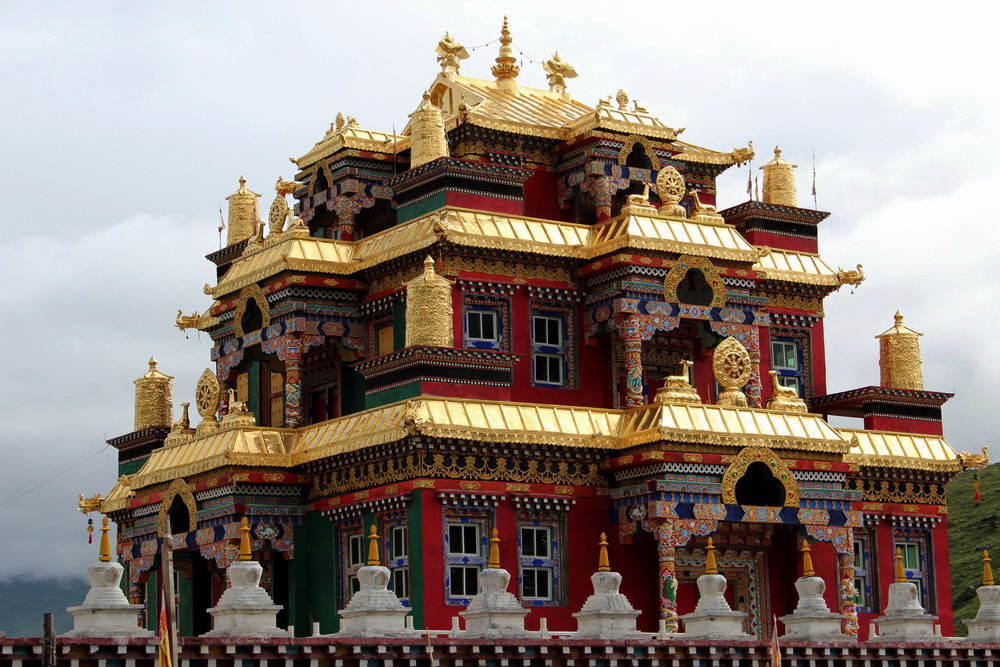


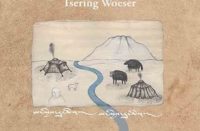
Follow Us!